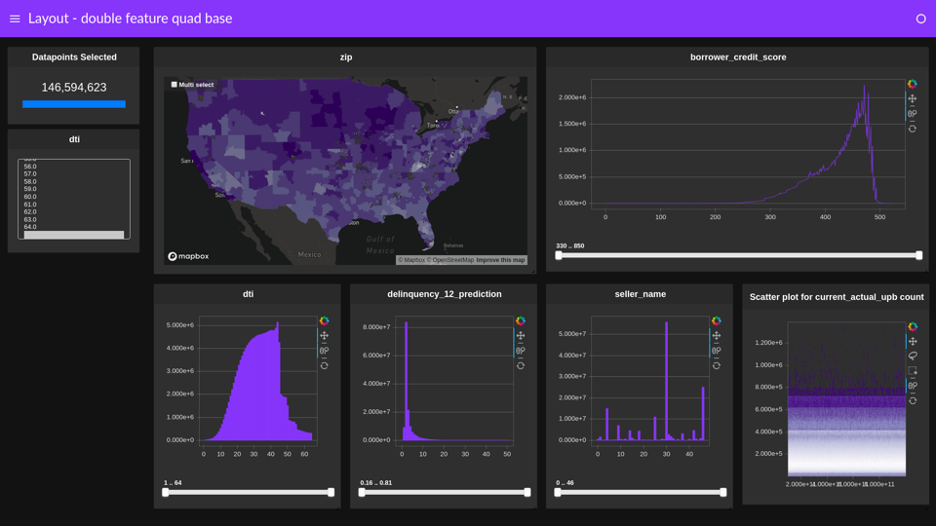From local small businesses to multinational conglomerates, organizations rely on interactive dashboards to track and communicate essential business data. Flowfinity’s no-code business application development platform empowers you to create intuitive and interactive dashboards that help make intelligent decisions across your organization.
Users can examine charts to better understand overarching ideas and drill-downs to view granular details with ease. This flexibility in understanding the context and significance of a chart leads to informed decision-making.
Visualization
A key aspect of interactive data visualization is the ability to easily dissect data to uncover new insights. A well-built dashboard will provide users with several different options to do this. One way is to allow them to click on any data set in a chart to instantly create a quick filter without altering the original data for anyone else viewing the dashboard.
Another method is to utilize a hover feature, which shows additional information when a user hovers over a visualization. This can include definitions, notes or specific explanations of the data being presented. This is particularly useful for dashboards that are being used to present data at a meeting or when the data is unfamiliar to people.
These features help business users independently explore data and quickly find answers to their questions. In turn, this enables them to make more confident decisions and reduces the burden on IT teams. The result is a self-serve analytics experience that helps best-in-class businesses improve their bottom lines.
Drill-downs
The drill-down feature in an interactive dashboard lets users navigate into the finer levels of data representation. It lets them explore the details of a graph or chart without changing the original data set. This functionality allows businesses to uncover and amplify key insights.
These capabilities help them connect with end-users by making it easy to comprehend complex data. This way, they can identify trends and issues quickly. It also helps them stay on track and keep projects within budget.
The drill-down feature is particularly useful for marketing teams because it allows them to present real-time results to clients. This is much faster than the process of creating a static report and waiting for it to update. It also makes it easier to handle follow-up questions. Additionally, it reduces the time required to prepare a presentation and gives marketers an edge over their competition. For example, a market research company can use an interactive dashboard to show clients their results in real-time and answer any follow-up questions in a timely manner.
Filters
Filters are an essential part of interactive dashboards. They are used to restrict the selection of features from a layer to power data visualizations in your dashboard. These filters can also be applied to multiple tabs on your dashboard to dynamically synchronize and apply filters across them. This saves time and increases productivity by eliminating the need to create and apply filters manually on each tab.
Interactive dashboards support filtering at a field level for all streams and tiles, and also for visual filters. For example, a user can click a specific country in a map on the dashboard to activate it as a visual filter for all streams and tiles that use that dimension.
With these interactive dashboard features, users can quickly get insights and make informed decisions. Unlike static presentations, interactive dashboards are always up-to-date with the latest data and can provide multiple perspectives on a single dataset. This allows stakeholders to understand key business KPIs at a high-level, and also drill down for more detailed answers.
Actions
The best dashboards offer actionable insights that drive users to take immediate action without waiting for a data team to generate and distribute a report. This means that critical information can reach more people throughout the organization, empowering them to spot exceptions and opportunities.
For example, the interactive template shown above provides insight into 5 key demographic metrics that are important to market researchers: gender, age, education level, household income, and technology adoption. This gives marketers a quick snapshot of important customer segments so they can focus on what matters most to their business.
A click-to-filter function is also a powerful feature that allows you to jump onto a visualization and apply a filter without leaving the dashboard. This saves time and effort because the analysis is done within the dashboard, rather than outside of it, which can be cumbersome and requires extra work to format data into usable presentation formats. You can even create named actions to automate this process and use them over and over again.

